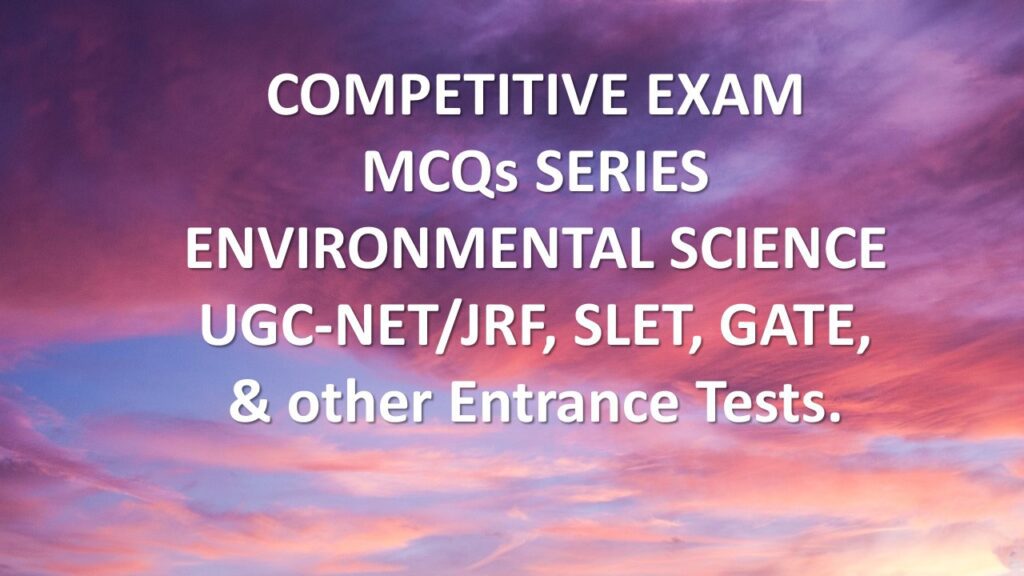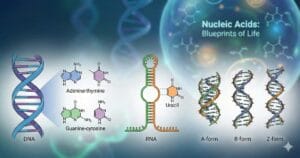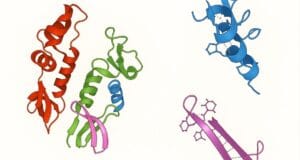
Welcome to the COMPETITIVE EXAM MCQs SERIES of ENVIRONMENTAL SCIENCE for UGC-NET/JRF, SLET, GATE, and other entrance tests – Structure and Composition of the Atmosphere.
The syllabus for “Structure and Composition of the Atmosphere” in UGC NET Environmental Science typically covers the following topics:
- Introduction to the Earth’s atmosphere and its layers.
- Composition of the atmosphere: Major and trace gases.
- Vertical distribution of temperature and pressure in the atmosphere.
- Atmospheric circulation: Global wind patterns, monsoons, and local winds.
- Atmospheric humidity and precipitation: Concepts of relative humidity, dew point, and different forms of precipitation.
- Atmospheric stability and adiabatic processes.
- Atmospheric optics: Phenomena like scattering, refraction, and reflection in the atmosphere.
- Greenhouse effect and global warming.
- Air pollution and its impact on the atmosphere.
- Ozone layer depletion and its environmental implications.
- Aerosols and their role in atmospheric processes.
- Atmospheric modelling and climate change predictions.
This quiz contains the concept-based most frequently asked 25 MCQs of “Structure and Composition of the Atmosphere“. Each question has a single correct/most appropriate answer.
1. Assertion (A): The greenhouse effect is primarily due to water vapour in the atmosphere.
Reasoning (R): Water vapour is the most abundant greenhouse gas and traps a significant heat radiated from the Earth’s surface.
a) Both A and R are true, but the R is not the correct explanation of the A.
b) Both A and R are true, and the R is the correct explanation of the A.
c) The A is true, but the R is false.
d) The A is false.
2. The atmosphere contains various layers each having a characteristic composition. The correct sequence starting from the earth’s surface is:
a) Troposphere – Stratosphere – Mesosphere – Thermosphere
b) Stratosphere – Troposphere – Mesosphere – Thermosphere
c) Stratosphere – Mesosphere – Troposphere – Thermosphere
d) Mesosphere – Stratosphere – Thermosphere – Troposphere
3. Assertion (A): The troposphere is the densest layer of the atmosphere.
Reasoning (R): The weight of the air above compresses the air molecules in the troposphere, resulting in higher air density.
a) The A is true, but the R is false.
b) Both A and R are true, but the R is not the correct explanation of the A.
c) The A is false.
d) Both A and R are true, and the R is the correct explanation of the A.
4. Assertion (A): The stratosphere is warmer than the troposphere.
Reasoning (R): The stratosphere contains a higher concentration of ozone, which absorbs and re-emits solar radiation, leading to an increase in temperature with altitude.
a) The A is true, but the R is false.
b) Both A and R are true, but the R is not the correct explanation of the A.
c) Both A and R are true, and the R is the correct explanation of the A.
d) The A is false.
5. Which gas is responsible for the blue colour of the sky?
a) Carbon dioxide
b) Oxygen
c) Nitrogen
d) Water vapour
6. Which gas is the third most abundant in Earth’s atmosphere?
a) Nitrogen
b) Argon
c) Oxygen
d) Carbon dioxide
7. Which gas is responsible for the red colour of the sunset?
a) Carbon dioxide
b) Nitrogen
c) Oxygen
d) Ozone
8. The Coriolis effect is caused by:
a) Ocean currents
b) Earth’s rotation
c) Atmospheric pressure differences
d) Greenhouse gases
9. The dew point is the temperature at which:
a) Water evaporates from surfaces
b) Dew forms on surfaces
c) Air becomes saturated with water vapour
d) Rainfall occurs
10. The layer of the atmosphere that contains the ozone layer is located approximately:
a) 0-10 kilometres above Earth’s surface
b) 100-500 kilometres above Earth’s surface
c) 10-50 kilometres above Earth’s surface
d) 50-100 kilometres above Earth’s surface
11. The layer of the atmosphere where most meteoroids burn up upon entering is the:
a) Thermosphere
b) Mesosphere
c) Stratosphere
d) Troposphere
12. The mesosphere is the layer of the atmosphere where:
a) Most weather phenomena occur
b) The temperature increases with altitude
c) Satellites orbit the Earth
d) The auroras (Northern and Southern Lights) occur
13. The term albedo refers to:
a) The density of air in the atmosphere
b) The reflection of solar radiation from Earth’s surface
c) The absorption of carbon dioxide by plants
d) The amount of ozone in the atmosphere
14. The ozone layer is important for protecting life on Earth because it:
a) Absorbs harmful ultraviolet radiation
b) Regulates the Earth’s climate
c) Absorbs carbon dioxide
d) Produces oxygen through photosynthesis
15. Assertion (A): The ozone layer benefits life on Earth.
Reasoning (R): The ozone layer absorbs harmful UV radiation from the Sun, preventing it from reaching the Earth’s surface and protecting living organisms.
a) Both A and R are true, but the R is not the correct explanation of the A.
b) The A is false.
c) Both A and R are true, and the R is the correct explanation of the A.
d) The A is true, but the R is false.
16. The atmospheric layer that contains the ozone layer is warmer than the layer below it due to:
a) Emission of greenhouse gases
b) Advection of warm air from the equator
c) Conduction of heat from Earth’s surface
d) Absorption of solar radiation by ozone
17. Which of the following is not a primary air pollutant?
a) Ozone
b) Nitrogen dioxide
c) Carbon monoxide
d) Sulfur dioxide
18. Which weather conditions are most conducive to the formation of photochemical smog?
a) Foggy and misty weather
b) Hot and humid weather
c) Cold and dry weather
d) Windy and rainy weather
19. The tropopause is the boundary between which two atmospheric layers?
a) Troposphere and stratosphere
b) Stratosphere and mesosphere
c) Thermosphere and exosphere
d) Mesosphere and thermosphere
20. The process by which a gas changes directly into a solid is called:
a) Sublimation
b) Condensation
c) Evaporation
d) Deposition
21. The layer of the atmosphere where the International Space Station orbits is the:
a) Thermosphere
b) Mesosphere
c) Stratosphere
d) Troposphere
22. In a close ecosystem, across its boundaries:
a) Both energy and mass cannot transfer
b) Mass can transfer but energy cannot transfer
c) Both energy and mass can transfer
d) Energy can transfer but mass cannot transfer
23. Assertion (A): The ozone hole is primarily caused by human activities.
Reasoning (R): Certain chemicals, such as chlorofluorocarbons (CFCs), released by human activities can deplete the ozone layer, leading to the formation of an ozone hole.
a) The A is false.
b) The A is true, but the R is false.
c) Both A and R are true, and the R is the correct explanation of the A.
d) Both A and R are true, but the R is not the correct explanation of the A.
24. The layer of the atmosphere where weather phenomena occur is the:
a) Mesosphere
b) Troposphere
c) Thermosphere
d) Stratosphere
25. The atmospheric layer where the Northern and Southern Lights occur is the:
a) Thermosphere
b) Mesosphere
c) Stratosphere
d) Troposphere
Previous: Fundamentals of Environmental Sciences
Next: Laws of thermodynamics
References
- Fleagle, Robert G. and Businger, Joost A. (1980) Principles of Atmospheric Physics and Chemistry, McGraw-Hill, 1st edition.
- Lutgens, Frederick K. and Tarbuck, Edward J. (2014) The Atmosphere: An Introduction to Meteorology, Pearson, 13th edition.
- Seinfeld, John H. and Pandis, Spyros N. (2016) Atmospheric Chemistry and Physics: From Air Pollution to Climate Change, John Wiley & Sons, 3rd edition.

